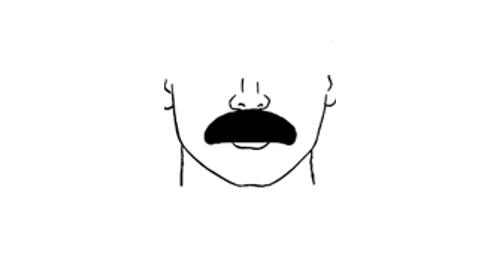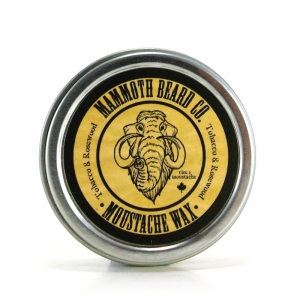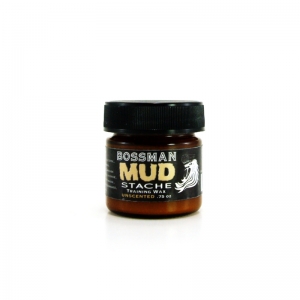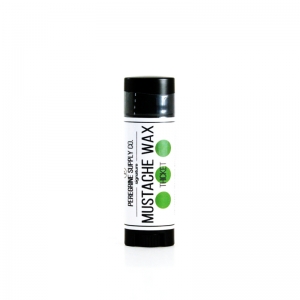The Mustaches in the Virility Quest of Men
From the dawn of times, men all seek to present themselves under their most manly and charming side. To do this, many of them decide to grow a mustache which that greatly accentuates their personal style. Of course, there is an impressive variety of mustache style and of course, they are all original.
In order to properly define your mustache style, you will need to consider the genetics of your facial hair. Some mustache styles will be ideal for some while other styles will simply be impossible to sport for others.
This blog post shows you the 13 most popular and most common mustache styles, sported anywhere on the globe.
Before we continue, make sure to grab your copy of our brand new Free ebook: The ultimate Beard in 10 easy steps!
The 13 most popular different mustache styles

1. The chevron style mustache
This style was popularized during the 1980s, when Tom Selleck sported it for the Magnum TV show. The chevron mustache is quite thick and wide. The latter generally tends to completely cover the border of the upper lip. To grow this mustache, you just need patience and let the hair grow between the upper lip and the nose. Once the desired length is reached, it is sufficient to maintain it regularly with mustache scissors. Beard's grooming products such as oils and creams can be effective for optimizing the mustache development, but at the end this style remains natural and should not require mustache wax.
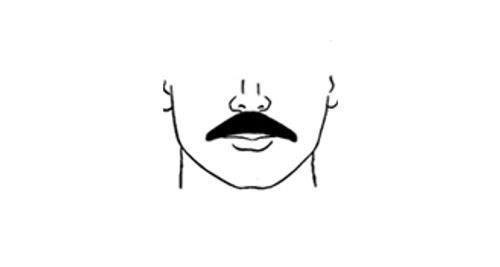
2. The Dali style mustache
This style of mustache is inspired by the emblem of surrealism of the 20th century, the Spanish painter Salvador Dali. The Dali-style mustache is rather narrow and its outer tips are curved upward. Again, to grow this mustache, you first need patience, in order to initially let hairs between the upper lip and the nose grow so that they reach a certain length. It is also necessary to train them regularly to grow towards the ends of the mouth with a mustache comb. Finally, you have to curve the tips upwards with a good mustache wax. Since this style requires a mustache wax application, you will also need a good beard shampoo to wash your mustache.
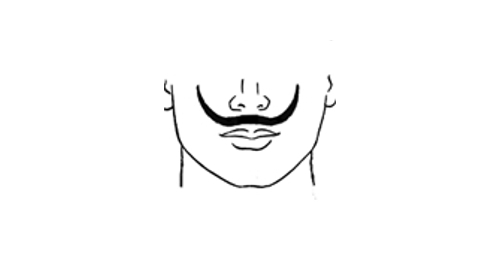
3. The English style mustache
The English-style mustache is quite similar to the Dali-style. It is also quite long and narrow. It is, however, distinguished from the Dali-style mustache by its division in the middle of the upper lip and its tips which are slightly less curved. To develop this mustache style, you will need to train your mustache's bristles to grow towards corners of your mouth with a mustache comb and will also need a good quality mustache wax to hold the tips in place. A shampoo for facial hair will also be required. Finally, all hairs in the vicinity and under the corners of your mouth should be shaved.
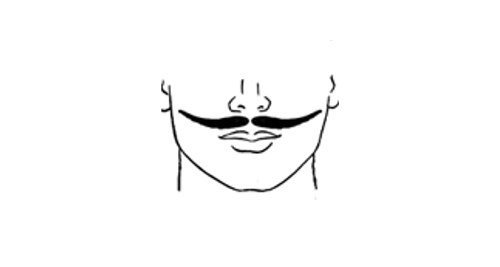
4. The Fu Manchu style mustache
This style of mustache appeared on the European continent in 1923 thanks to the series of British novels 'The Mystery of Dr. Fu Manchu'. Subsequently, this mustache was popularized with the appearance of cinema and has rapidly become a classic stereotype of Chinese villains. Obviously, this style of mustache owes its origin to the Asians who wore this mustache long before it was popularized in Europe. The Fu Manchu mustache style begins above the upper lip and extends on either side of the mouth to finally descend below the jaw. All hairs on the chin are shaved. Of course, the Fu Manchu mustache style requires patience because it is very long to develop. It also requires appropriate care. It should be combed daily with a mustache comb and some like to use a mustache wax or a beard balm to help give it some shape.
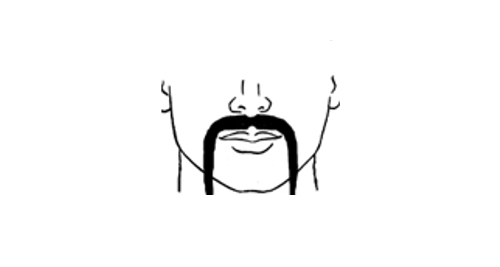
5. The handlebar style mustaches
This style of mustache, in all its variations, is certainly one of the most classical. Obviously, it is also one of the oldest and it is still today commonly sported. The handlebar-style mustaches have fascinated men since the Iron Age. They have seen their increases and decreases in popularity over time, but are still appreciated and worn today. The handlebar style mustaches can be large or small. These mustaches are particular. Unlike other styles that require regular maintenance and cutting, the handlebar mustache begins in the middle of the upper lip and bristles must be combed towards the ends of the mouth. Plus, the tips of these mustaches are bent upwards. To grow a handlebar mustache, you have to fight the desire to cut hairs that are too long and come over your upper lip. The time and a combing of the mustache under a daily base will allow its hairs to grow in the desired direction. Of course, a mustache wax application is required so that your handlebar style mustache (large or small) takes and holds its shape. You will also need a shampoo for facial hair in order to thoroughly wash your mustache.
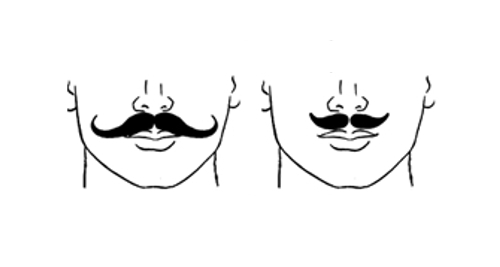
6. The Horseshoe style mustache
The horseshoe-style mustache is impressive. Obviously, it is an ideal style for those who like to be different and stand out as Hulk Hogan, a legend & an emblematic figure of this style of mustache. The horseshoe-style mustache strongly looks like the Fu Manchu-style mustache. The main difference is that rather than letting the tips of the mustache grow to below the jaw, they are cut exactly at the edge of the jaw. Thus, this style of mustache looks like an inverted horseshoe, hence its name. To grow this style of mustache, you will first need to grow your beard and mustache. Once the thickness will be adequate, it will be time to trim it all with a precision beard trimmer. You will use your beard's bristles to create two vertical stripes that will be the continuities of your mustache. Everything that is outside and inside these two stripes excluding the mustache must be shaved daily. To do this, we suggest you do it with the Urban Beard safety razor.
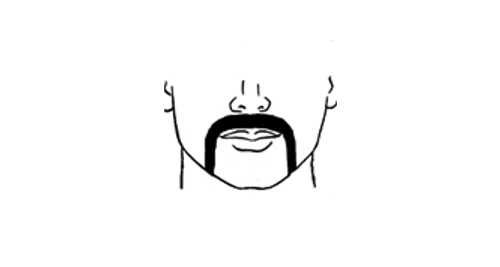
7. The Imperial style mustache
The Imperial mustache is similar to the Dali but is less sophisticated. It has a rather natural look. The Imperial style mustache is quite big and thick and takes some time before reaching the desired length and thickness. This is the combination of the entire mustache that grows above the upper lip with hairs of the cheeks. Hairs that are on the cheeks are the continuity of the mustache and are bent upwards. To ensure a maximum holding, we suggest using a mustache wax or a beard balm with a good hold (when applying wax, do not twist the tips to avoid ending with a Dali mustache). Finally, to train the hair of the mustache to naturally take their place, it will be necessary to comb it every day with a mustache comb.
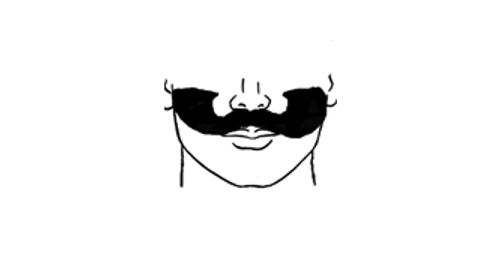
8. The Lampshade style mustache
The lampshade mustache style is fairly rudimentary and simple to develop. This one is similar to the painter's brush style mustache. It is nevertheless distinguished by its edges which are all straight. No roundness or curve should be apparent on the lampshade-style mustache. The ends are all cut in a straight line and have a slight inclination. This type of mustache must have a considerable thickness to look good. To grow this mustache, it only takes times to let the mustache have a good thickness and finally a pair of mustache scissors to maintain it daily.
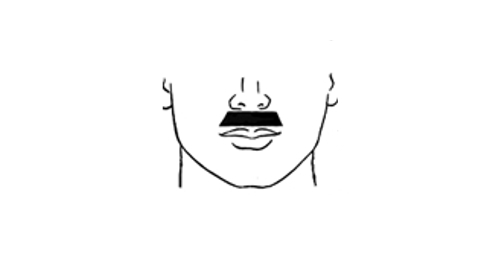
9. The Painter's brush mustache style
The painter's brush mustache style strongly looks like the lampshade and chevron mustache style. Nevertheless, it still has its distinctions. This mustache is relatively thick and covers the entire part above the upper lip. Important rule, a painter's brush mustache should never be wider than the mouth. Unlike the chevron style, no hairs should come over the upper lip. Thus said, a daily maintenance with mustache scissors is required. Finally, this style of mustache is distinguished from the lampshade & chevron mustache style by its ends which are slightly rounded.
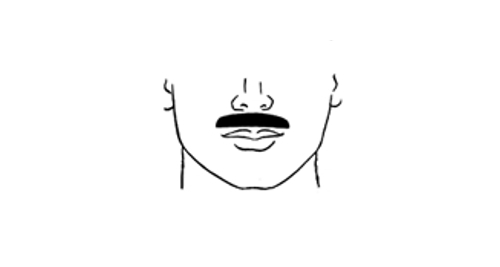
10. The pencil style mustaches
Mustaches of this style are generally small, thin and narrow as if they had been drawn with a pencil. In fact, they follow the line of the upper lip without ever touching it. These mustaches must never touch the nose too. They should be centered so that the two regions on either side of the mustache are symmetrical. This mustache style can take several variations. For example, rather than being in a single straight line, the mustache may have a small separation at the philtrum (small dimples in the middle of the upper lip). Otherwise, the angle of the mustache itself can also be changed. Obviously, pencil style mustaches require daily maintenance with mustache scissors.
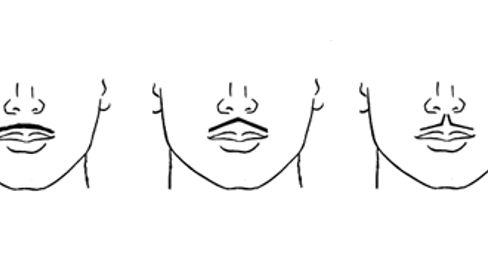
11. The pyramidal style mustaches
Since it is impossible for us to give you the exact date of the construction of the pyramids, it is difficult to tell you when men began to be inspired by them for their mustaches. However, they are still very popular today. Mustaches of this style have a decent size and are rather thick. They must not be wider than the mouth and must, of course, have a pyramidal shape. Again, they may have some variations. The lines of these mustaches may be straight or rounded, their angles may be more or less pronounced and their size may also vary. To maintain a beautiful, well-groomed pyramidal mustache, you will, of course, need to maintain it regularly with mustache scissors.

12. The toothbrush or Hitler mustache style
This style of mustache gained popularity with the actor, screenwriter, and composer Charlie Chaplin and quickly lost its popularity due to the dictator of the Nazi Germany Hitler. The toothbrush or Hitler mustache-style is quite thick and usually, makes an inch wide. This one should be centered with the upper lip. As a general rule, this mustache should never be wider than the nose and its hairs should never come over the upper lip. This style of mustache is probably the easiest to create. It is only necessary to develop a mustache of some months so that it has a suitable thickness and then, using a razor, shave both ends of the mustache with a right angle. At the end, it should be groomed daily with a mustache comb and scissors.

13. The walrus mustache style
Initially sported by the Celts and Gauls, the walrus mustache-style experienced its biggest increase in popularity towards the end of the 19th century. Men of every status loved this natural and disorderly style. We only have to remember the rocker David Crosby, the hockey player Lanny McDonald, the US President Theodore Roosevelt or the Soviet leader Josef Stalin, whom all have worn the walrus-style mustache. Today, Jamie Hyneman, the host of the popular show MythBusters, proves to be the emblematic figure of the walrus-style mustache. The walrus mustache-style is very bushy and broad. It usually descends over the upper lip or can even cover the entire mouth and also extends on either side of the corners of the mouth. Although it is at first long to develop, it will finally be necessary to maintain it with mustache scissors.
